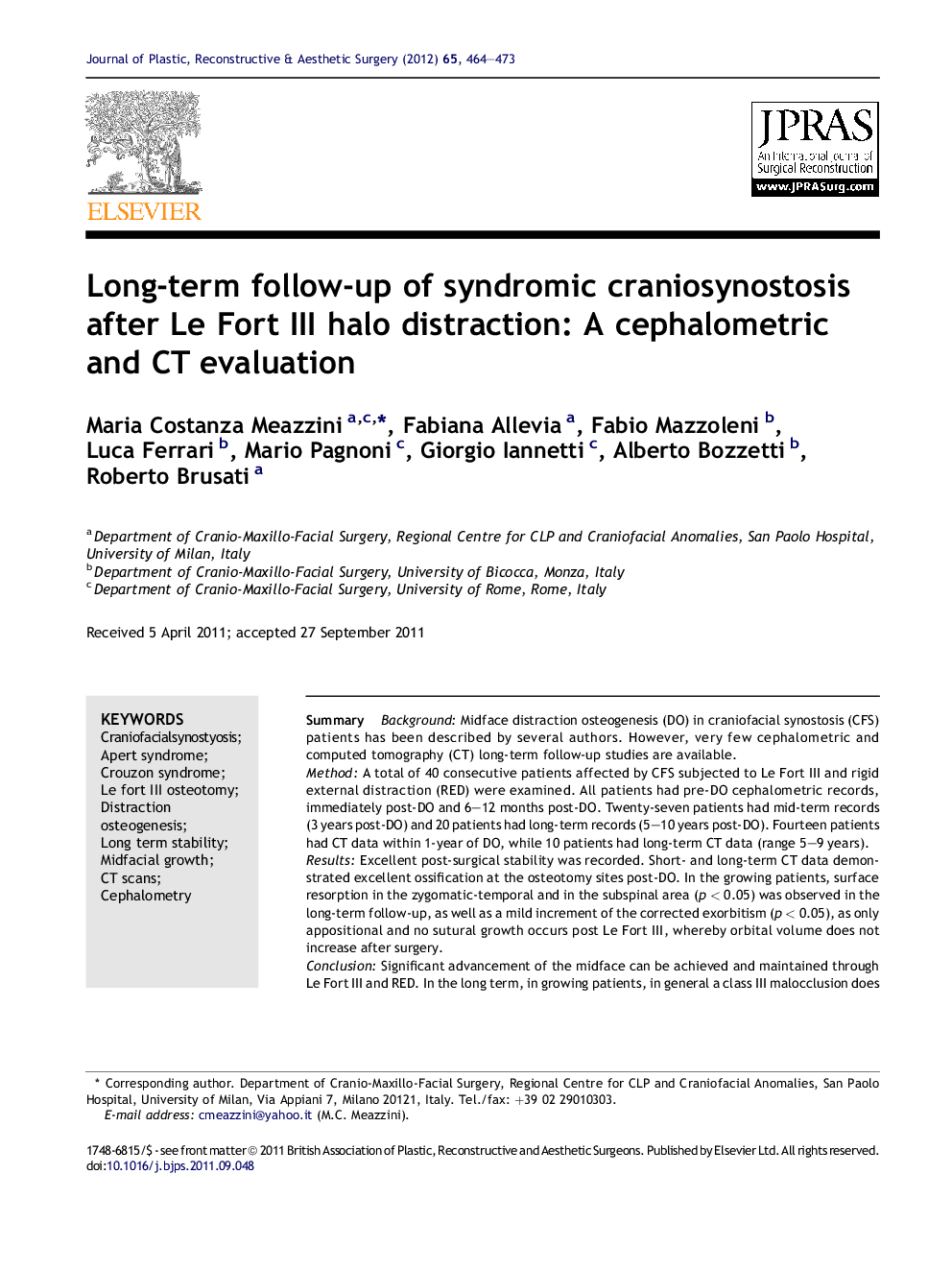| Article ID | Journal | Published Year | Pages | File Type |
|---|---|---|---|---|
| 4118288 | Journal of Plastic, Reconstructive & Aesthetic Surgery | 2012 | 9 Pages |
SummaryBackgroundMidface distraction osteogenesis (DO) in craniofacial synostosis (CFS) patients has been described by several authors. However, very few cephalometric and computed tomography (CT) long-term follow-up studies are available.MethodA total of 40 consecutive patients affected by CFS subjected to Le Fort III and rigid external distraction (RED) were examined. All patients had pre-DO cephalometric records, immediately post-DO and 6–12 months post-DO. Twenty-seven patients had mid-term records (3 years post-DO) and 20 patients had long-term records (5–10 years post-DO). Fourteen patients had CT data within 1-year of DO, while 10 patients had long-term CT data (range 5–9 years).ResultsExcellent post-surgical stability was recorded. Short- and long-term CT data demonstrated excellent ossification at the osteotomy sites post-DO. In the growing patients, surface resorption in the zygomatic-temporal and in the subspinal area (p < 0.05) was observed in the long-term follow-up, as well as a mild increment of the corrected exorbitism (p < 0.05), as only appositional and no sutural growth occurs post Le Fort III, whereby orbital volume does not increase after surgery.ConclusionSignificant advancement of the midface can be achieved and maintained through Le Fort III and RED. In the long term, in growing patients, in general a class III malocclusion does not re-occur, but physiological remodelling processes at the maxillary-zygomatic level, not coupled with sutural growth, tend to mildly re-express the original midfacial phenotype and the exorbitism.
